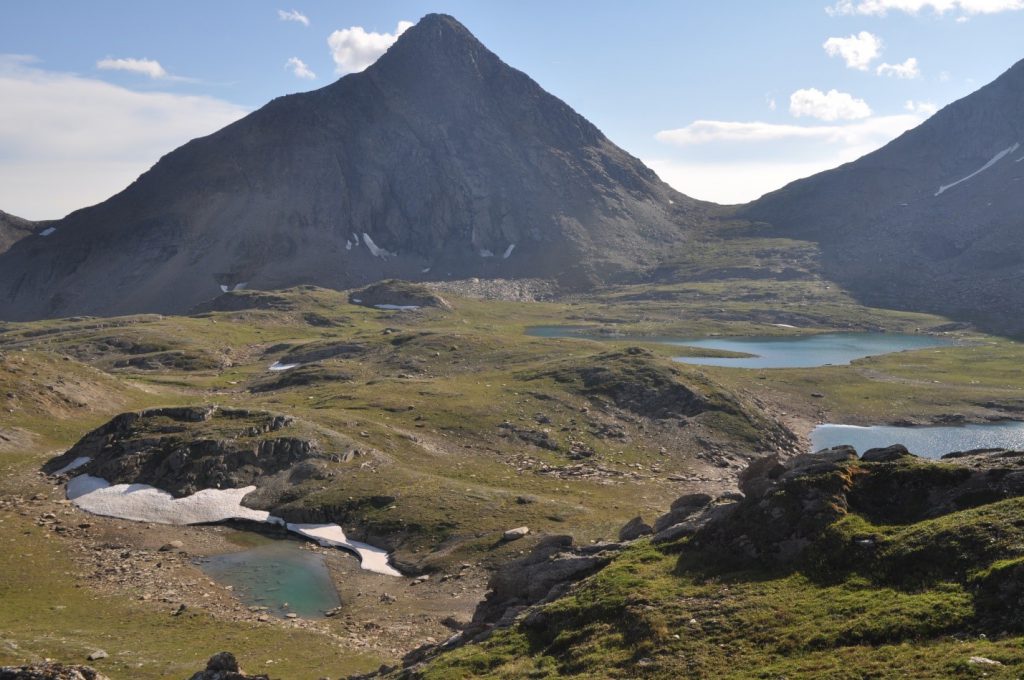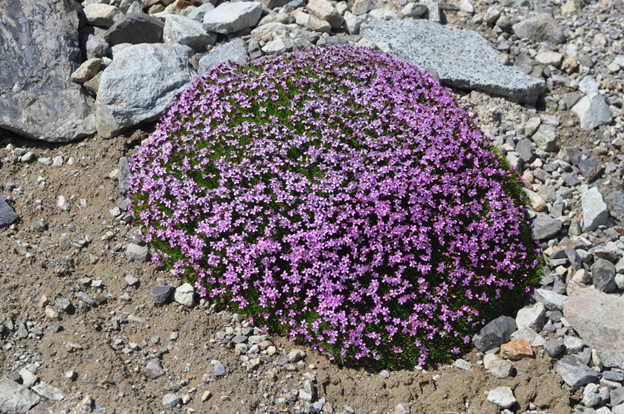Discovering the alpine plants of Graham-Laurier Provincial Park
Categories:

Written by: Ken Marr, Royal BC Museum
In the summer of 2018, biologists from the Royal BC Museum (RBCM) and the Ministry of Forests, Lands and Natural Resources Operations and Rural Development (FLNRORD) went on a mission to collect plant, insect, spider and mushroom specimens from the remote alpine zone (the land above the trees) of Graham-Laurier Provincial Park, located 180 km west of Fort St. John. My job as a botanist at the RBCM was to collect plant specimens, which is part of a larger initiative that began in 2002 to document the plants of B.C.’s alpine – a life zone in which relatively few biodiversity surveys have been undertaken.
The team’s access was by helicopter since there are no roads. We camped for six days at one site, just north of Laurier Pass, and at a second site in the upper basin of Poutang Creek. Each day we hiked many hours endeavouring to reach as many different habitats as possible and collected specimens of every species we encountered. Cushion plants such as moss campion (Silene acaulis) dominate the windswept ridges. Meadows are dominated by heather or Altai fescue. Sedges such as cotton grass (Eriophorum) are common in wetlands. In the evenings we pressed and dried the plant specimens to preserve them.
The alpine vegetation of B.C. has been classified into three zones. The alpine of Graham-Laurier Provincial Park belongs to the Boreal Altai Fescue Alpine (BAFA) zone that covers the northern two thirds of B.C.’s alpine. Alpine habitats include meadows, ponds and lakes, rocky outcrops and windswept ridges, each with their own suite of species. The short season favours perennial species. These can grow quickly from overwintering stems and reach the flowering stage relatively sooner than annual species that must start the brief warm season by first germinating from seeds. The species present include dwarf shrubs, grasses, sedges, rushes and colourful wildflowers that are adapted to open, treeless habitats, short growing seasons and cold winters.
We collected specimens of more than 220 plant species. They contribute new information about patterns of distribution and are available to researchers worldwide who may want to study their ecology, morphology or DNA. Several collections represent range extensions including northern shootingstar (Dodecatheon frigidum) – 200 km south of previous collections. Some species, such as Oeder’s Lousewort (Pedicularis oederi) also grow in Asia, Europe and the U.S. Rocky Mountains. They must have migrated widely throughout the northern hemisphere during the Pleistocene when Asia and North America were repeatedly connected by the Bering land bridge and when tundra-like environments existed at low elevations. When the climate warmed, they moved up to the mountain tops as the valleys became too dry and the slopes became forested.
Treeline, the elevation above which trees cannot grow, is controlled by temperature. In Graham-Laurier Provincial Park, this elevation is approximately 1,700 m. We noted many white spruce trees 1.0 to 1.5 m tall with few, if any, dead trees at 1,750 m. On a ridge at 2,000 m we observed white spruce, with recent growth of 15 cm/year. A reasonable conclusion from these observations is that the climate is warming and the treeline is moving higher. The habitat for species that can only grow in open alpine habitats will diminish.
Associated collection data (collector, date, latitude, longitude, elevation, and habitat) has been entered in the Royal BC Museum database and the information is publicly available. The specimens have been identified and will be mounted, labelled and placed into the collection. The specimens that we collected represent a ‘snapshot’ in time of the species present in 2018.
Inventories such as this help land managers make scientifically informed decisions. Perhaps someday, another group of biologists will visit this location and will note the types of changes that have occurred.
This field work was supported by the BC Parks Licence Plate Program, the BC Parks Enhancement Fund, the Royal BC Museum. Highland Helicopters and Pacific Coastal Airlines. For more information, visit https://learning.royalbcmuseum.bc.ca/pathways/alpine-plants/






